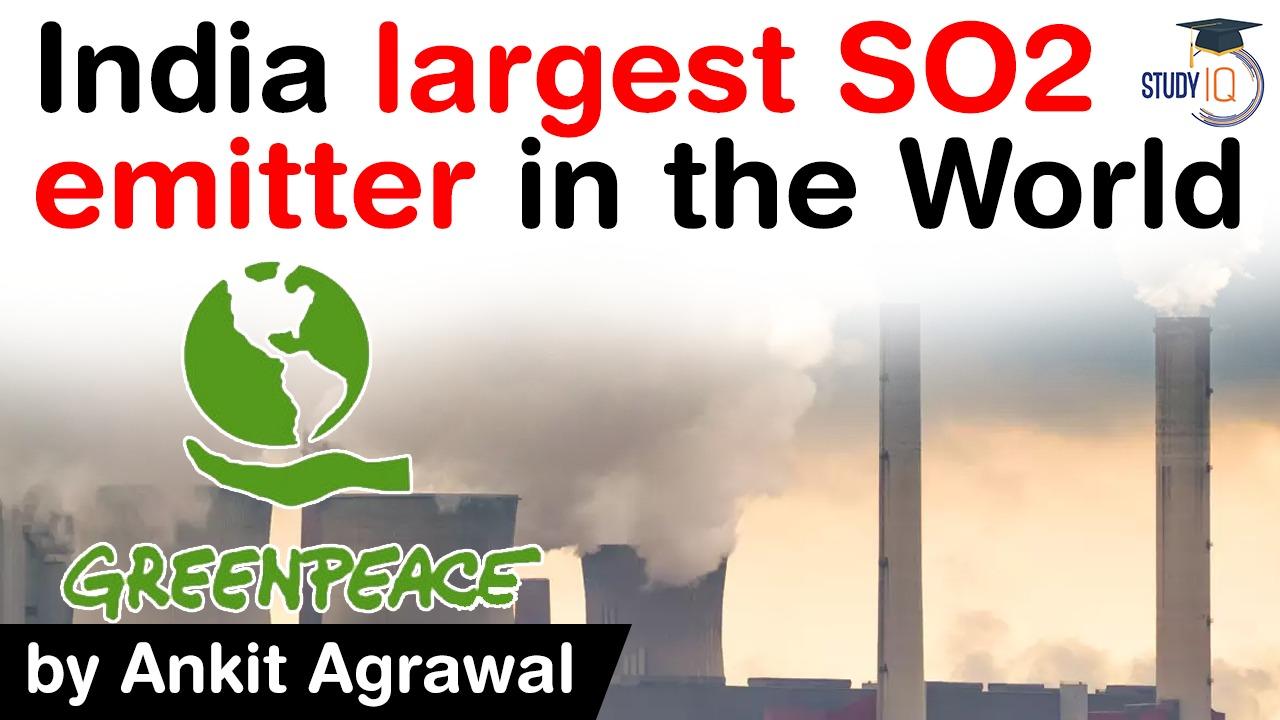Table of Contents
What happened?
- According to a report from Greenpeace India and the Centre for Research on Energy and Clean Air (CREA).
- For the first time in four years India’s sulphur dioxide (SO2) emissions recorded a significant decline of approximately 6% in 2019 compared to 2018, the steepest drop in four years.
- However, India continues to occupy the top spot among emitters for the fifth consecutive year.
About the report
- The report ranks the world’s biggest emitters of SO2,
- A poisonous air pollutant that increases the risk of stroke, heart disease, lung cancer, and premature death.
What is Sulphur dioxide (SO2)?
- It is a toxic gas released when materials that contain sulfur, an element found in all types of coal and oil resources, are burned.
About India
- In 2019, India emitted 21% of global anthropogenic (human-made) SO2 emissions,
- Or about 5,953 kilotons a year — nearly double that of second-ranked global emitter, Russia at 3,362 kt/year.
- China occupied the third position at 2,156 kt per annum.
Hotspots in India
- As per the report, the biggest emission hotspots in India, are thermal power stations (or clusters of power stations) at-
- Singrauli, Neyveli, Sipat, Mundra, Korba, Bonda, Tamnar, Talcher, Jharsuguda, Kutch, Surat, Chennai, Ramagundam, Chandrapur, Visakhapatnam and Koradi.
Reason
- Renewable energy capacity has been increasing in India’s power sector, delivering more than two-thirds of the subcontinent’s new capacity additions during the FY 2019-20.
- But most coal plants in India are lacking in flue-gas desulfurization (FGD) technology, which is necessary to scrub emissions clean off sulphur.

- Avinash Chanchal, Climate Campaigner, Greenpeace India, said in a statement,
- “We are seeing a reduction in SO2 emissions in the top three emitter countries.
- In India, we’re getting a glimpse of how reduction in coal usage can impact air quality and health.
- In 2019, renewable energy capacity expanded, coal dependency decreased and we saw a corresponding improvement in air quality.”
- “But our air is still far from safe.
- We must speed up the energy transition away from coal and towards renewables, for our health and economy.
- While ensuring just transition of energy, with the help of decentralized renewable sources, we need to prioritise access to electricity for the poor.”
What India is doing to reduce emission?
- In 2015, the Ministry of Environment, Forest and Climate Change (MoEF&CC) introduced SO2 emission limits for coal power stations.
- But power plants missed the initial deadline of December 2017 for the installation of FGD
- Though the deadline was extended till 2022, as of June 2020 most of the power plants are operating without compliance.
Way forward
- It’s high time that governments reduce investments in fossil fuels and shift to safer energy sources, such as wind and solar.
- Simultaneously, they must also strengthen emission standards and effectively implement flue gas pollution control technology
- Bandipur
- Bhitarkanika
- Manas
- Sunderbans
Which of the above are Tiger Reserves?
(a) 1 and 2 only
(b) 1, 3 and 4 only
(c) 2, 3 and 4 only
(d) l, 2, 3 and 4
Latest Burning Issues | Free PDF






























 WhatsApp
WhatsApp